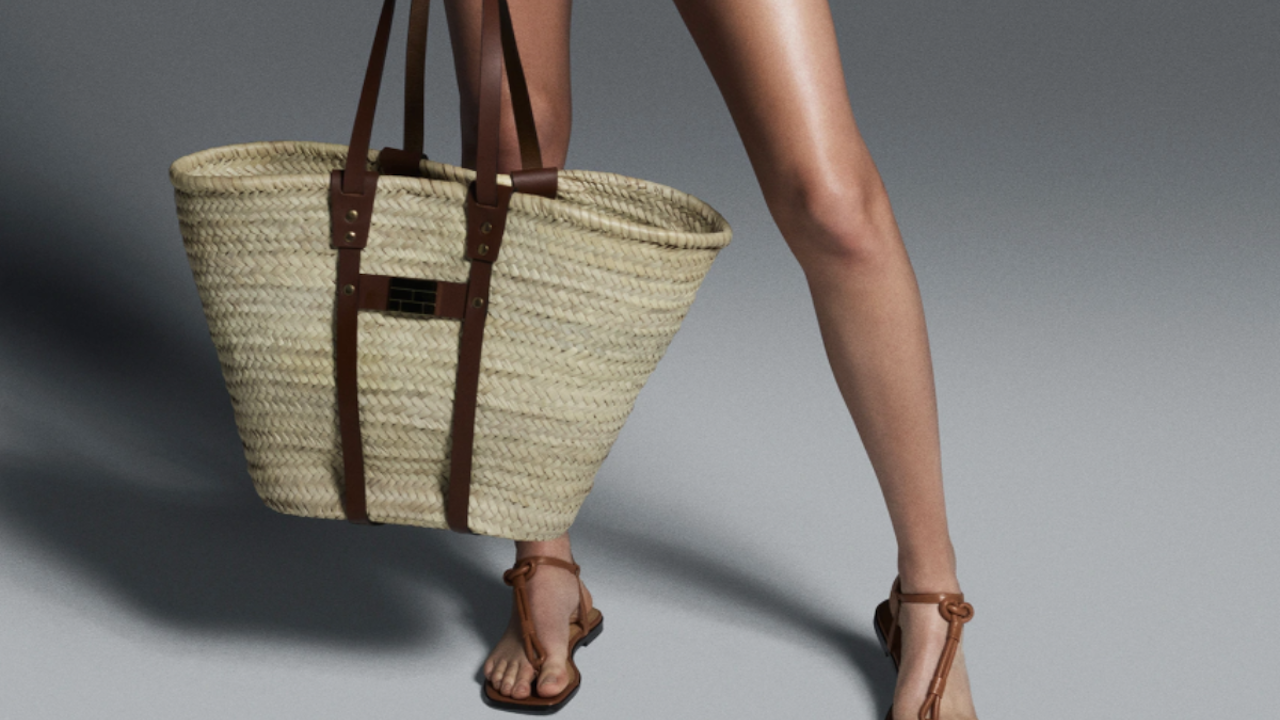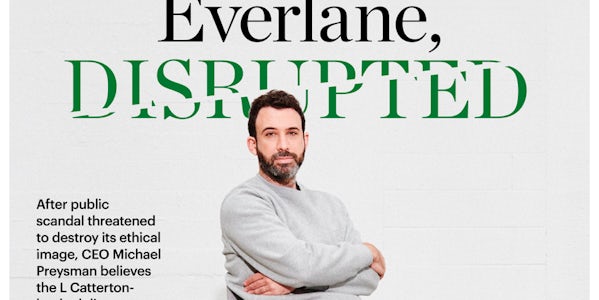Fashion Briefing: Should ready-to-wear brands just stick to clothes? 
Should ready-to-wear brands just stick to clothes?
For fashion brands, getting serious about growth typically means pulling one of two levers: introducing new product categories or expanding to new geographic markets. Recently, I’ve spoken with leaders of several fashion brands, in categories from contemporary to accessible luxury, who have embraced or are embarking on the former strategy, particularly by way of a handbag or shoe line. As they’ve discussed their reasons for going there, in relation to the things they’ve come to know about their shoppers’ behavior, they’ve revealed a common concern: Compared to clothes, their customer is willing to make bigger investments in accessories. And, for better or worse, they’re turning to top luxury fashion houses to do so.
On Thursday night, during a Glossy+ live podcast event at the Frame store in NYC’s SoHo neighborhood, the brand’s co-founder and chief creative officer, Erik Torstensson, spoke about the buying habits of the Frame shopper. In building out their classic, cool everyday uniform, they’re dropping $200-$300 on the brand’s jeans and upward of $75 on its tanks and tees. Meanwhile, they’re looking to accessories to be the statement makers of their look, relying on brands by the likes of Chanel and YSL.
That’s despite the fact that Frame recently launched women’s shoes, in June 2020. And it introduced handbags in 2018. Torstensson didn’t go so far as to say the brand would be phasing out the categories, but he did stress that it would hone in on what it does best: women’s and men’s apparel. It relaunched the latter in fall 2021. Currently, the $600 totes sitting on Frame’s store shelves are being purchased for “the 13-year-old daughter” of women shopping Frame clothes for themselves. “No 13-year-old should be carrying Chanel,” Torstensson laughed.
In another recording for the Glossy Podcast this week, Nili Lotan, founder and designer of her namesake brand, echoed some of Torstensson’s learnings about Frame’s shopper while discussing her brand’s own. The Nili Lotan customer also shops at Celine, and thus far, that’s worked to the brand’s advantage. For example, they don’t think twice before investing in multiple $300 Nili Lotan button-downs, as they’re used to seeing $1,200 price tags on those by Celine.
Now in growth mode, the brand is getting ready to introduce its first shoes and handbags. Lotan stressed the thoughtfulness going into these categories, noting that it will be a slow rollout of styles once they’re “perfect.”
Other brands of a similar price point and aesthetic that have debuted or expanded handbag offerings within the year include Anine Bing, with its vintage-inspired Nico bag in November, and Victoria Beckham, which in February previewed an expanded assortment of styles for fall. For Beckham, the move is part of a robust plan to position the brand for growth and profitability, following a rocky period. Earlier this week, the brand introduced shapewear line VB Body as part of that plan.
On the same note, on a call with me last week, Thakoon Panichgul, founder and designer of Thakoon, which relaunched as a DTC brand in late 2019, said he sees the handbag category as a potential opportunity.
“A lot of people are buying more expensive accessories, as clothes become less expensive,” he said. “They’re spending more on fancy bags and shoes.”
But he said, as he’d likely sell bags in the $200-$300 range, he’s working to understand buying behavior at “the cheaper end” of the spectrum.
As for bags at the higher end, there’s no question that they’re selling – like hotcakes, in fact. With luxury resale booming, Rebag, which focuses on handbags in the space, launched auction-based buying on Tuesday, seemingly as a means of cashing in to the max on in-demand styles. Meanwhile, reported this month, sales within Hermes’s leather goods and saddlery division beat expectations in the first quarter. LVMH reported a year-over-year revenue growth for its fashion and leather goods sector of 30% in the same period.
Still, many consumers appreciate ”quiet luxury,” sans logos and loud brand signifiers – which describes most of the bag styles that ready-to-wear brands are bringing to market. What’s more, getting bags in the hands of 13-year-olds isn’t the worst thing – hello, Gen Z.
Panichgul is taking a smart approach in taking a beat before jumping in. Rather than aiming to outfit more facets of an existing customer’s lifestyle by adding a handbag category, which is the common strategy, the move may instead be a play to acquire all-new customers.
It’s worth noting that Coach, best known for brands in the $300-$400 range, has aggressively targeted Gen Z in recent years, including with partnerships with Selena Gomez and Chloe Moretz. And using “affordable” accessories to bring young shoppers into a brand’s fold is, of course, nothing new.
Longchamp builds on sustainability goals with latest Le Pliage collab
Speaking of brands sticking to what they know…
On Tuesday, Longchamp held a launch party at its NYC SoHo store for its new collaboration with graffiti artist Andre Saraiva. For the collab, Saraiva recreated the brand’s iconic Le Pliage tote, using styles made in recycled nylon as the brand works toward ambitious sustainability goals. The four resulting styles feature the artist’s signature characters, Mr. A and Mrs. A. Saraiva also created and customized 200 mini versions of the Le Pliage, which are set to be collector’s items.
At the event, I spoke with Longchamp global CEO Jean Cassegrain and creative director Sophie Delafontaine about the brand’s collaboration strategy, prioritization of sustainability and ambitions, or lack thereof, for winning over Gen Z.
On sustainability
Cassegrain: “As Longchamp is a customer of [both] manufacturers and artisans, our take on sustainability may be a bit specific. When you make a product with the mentality of an artisan, you respect the environment you work in. Artisans, by nature, don’t like wasting. Like a chef in a kitchen, they’re proud to use everything and not throw anything away. We also stress that the first service we can do for the environment is to provide a product that is going to last a long time. Quality and sustainability are two sides of the same coin. But with that being said, it’s not just doing the same thing we’ve been doing forever, but It’s trying to improve. Next year, we’ll convert to exclusively using recycled fibers. A lot of our Le Pliage bags are already made of recycled polyamide or recycled polyester, and we’ve reduced their carbon footprint by 20% by switching to recycled materials. It’s the exact same quality as the virgin material, but it’s made from old carpet, old fishnets and old water bottles.
As a brand, we feel that our job is to deserve the trust of our customers. That trust was traditionally based on quality and nice design. Now, being suitable is part of what is needed to be trusted. A good brand is not going to be good anymore if it’s not also sustainable.”
On collaboration
Delafontaine: “It’s great for people who are external to come in and look at the product with fresh eyes – especially the Le Pliage, which is nearly 30 years old. Each [Le Pliage] collaboration we do is a mix of two universes. With Andre [Saraiva], he brought a romantic, poetic, pop vision of life to the [style]. It’s optimistic, it doesn’t take itself too seriously – it’s totally aligned with our brand values.
From 2006-2018, we collaborated with [designer] Jeremy Scott. For every season, he came up with something totally different and a bit of a surprise.”
Cassegrain: “We like that the people we collaborate with bring something different [to the table]. Designing something like a normal flower print is not the point. The point is to be unexpected.”
On targeting Gen Z
Cassegrain: “We are very inclusive of all generations. We don’t have a Gen-Z product, a Gen-Y product, something for Gen X. We just make things we like. It’s not about being marketing-driven; we’re more product-driven.”
Inside Our Coverage
Why fashion brands are rushing to Discord
Roblox obbys are serving as fashion brands’ gateway to gamers
How Batsheva Hay leveraged a viral moment to accelerate the growth of her vintage-inspired brand





